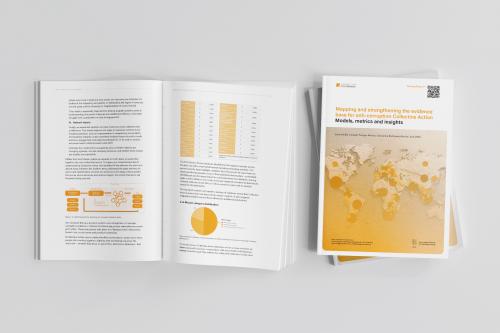Corruption in natural disaster situations – can our experiences help prevent corruption related to covid-19?

“Unprecedented” comes up again and again in commentaries on covid-19. But as I listen to more of my colleagues’ and other experts’ reflections on corruption in relation to the pandemic, it strikes me that we’ve seen many of the same features and corruption risks before.
In 2009 I co-wrote, with our former colleague Mirella Mahlstein, a chapter for International Law and Standards Applicable in Natural Disaster Situations edited by Erica Harper for IDLO (available in open access here). In the chapter, we explain why natural disaster situations are particularly vulnerable to corruption and other forms of abuse of funds. As I re-read the chapter, it becomes clear that the covid-19 pandemic and international response share many of the same elements as natural disaster situations.
The big picture is that major natural disasters, like the Indian Ocean tsunami of December 2004, often trigger a massive humanitarian response. This manifests as a sudden and enormous influx of money, goods and services into a country or region which is thrown into disarray from the unexpected event and whose institutions and infrastructure may be compromised. Governments and aid agencies are under enormous pressure to assist quickly. And like natural disasters, there is no moral dilemma to put a check on the process, as victim countries of the covid-19 health and economic crisis are seen as entirely blameless.
Similar thoughts were voiced just now by the President of the Council of Europe's Group of States against Corruption (GRECO), Martin Mrčela, noticing in particular the risks when countries display a combination of emergency, concentration of power, derogation of rights and freedoms, and large amounts of money infused into the economy.
Corruption risks in natural disaster situations that are particularly relevant to the current pandemic relate to:
Size
The huge financial and in-kind assistance involved is a dangerous enticement – and bad actors might reason that diversion will be less noticeable when more money and goods are involved. So inhibitions are lower, while the money that can be made through corruption is multiplied.
Speed
A hasty or skipped needs assessment may result in poor targeting, over- or under-supply of aid, or inappropriate projects. These all create opportunities for exploitation. Pressure to deliver aid quickly, coupled with emergency exception clauses, can also lead to bypassing standard procurement procedures.
Power
One-sided resource transfers exacerbate the asymmetrical power relationship between beneficiaries, who are economically and politically weak, and aid agencies. This power imbalance can result in low levels of transparency and accountability, increasing opportunities for corruption.
Complexity
When many different actors are involved in a (post-)disaster situation, this complexity helps to camouflage corruption. Lack of coordination among donors, governments, civil society organisations and private contractors – and their multiple different policies and guidelines – may lead to double-funding of the same project and other direct and indirect fraud or abuse.
Weak institutions
A high level of pre-crisis corruption due to weak institutions in affected states can increase corruption risks in disaster situations. Anti-corruption mechanisms, where they exist, may be weakened as governments focus on other priorities.
Context
When emergency relief is delivered by international organisations or bilateral aid agencies, expatriate staff in charge of the relief operations may lack experience with local conditions in a country. These local conditions include existing power relations or – as my colleague Claudia Baez Camargo emphasises in her research – the different social norms that exist around governance and corruption. Aid programmes could unintentionally reinforce inequalities in wealth and power at the local level.
Tools for corruption prevention in the covid-19 response
In addition to highlighting these and other risks, the paper goes on to use case studies of natural disaster response situations to illuminate individual risks and the respective responsibilities among the different involved actors.
In the final section, we note that preventing opportunities for corruption in post-disaster situations is fundamental to ensuring that aid eventually benefits the victims. In the context of covid-19, this seems especially pertinent. Maybe the brief guidance on tools and mechanisms to prevent and detect corruption in emergency relief operations, covering seven areas, from cooperation and coordination to monitoring, evaluation and enforcement, will help those in charge of corruption prevention in the covid-19 response.
Read the chapter here or download the entire book here. It was published by the International Development Law Organization (IDLO) in 2009. Note that the material is copyrighted but may be reproduced by any method without fee for any educational purposes, provided that the source is acknowledged.




